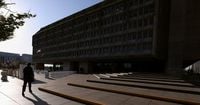On October 15, 2025, a federal judge in California issued a sweeping order that temporarily halts the Trump administration’s latest move to lay off thousands of federal employees during the ongoing government shutdown. The decision, handed down by Judge Susan Illston of the U.S. District Court for the Northern District of California, has sent ripples through Washington, D.C., and beyond, as unions, federal agencies, and the White House brace for the next phase in a legal and political standoff that’s left many public servants in limbo.
The heart of the matter lies in a controversial round of reduction-in-force (RIF) notices sent out on October 10, 2025. According to reporting from Federal News Network and CNN, approximately 4,000 federal employees across more than 30 agencies received notifications that their positions were being eliminated. The timing was striking: these notices landed just days into a government shutdown that began on October 1, after Congress failed to pass a stopgap spending bill.
Judge Illston’s temporary restraining order, as detailed in her full written opinion, bars the Trump administration from “taking any action to issue any reduction-in-force notices to federal employees … during or because of the federal government shutdown.” The order specifically covers all federal programs, projects, and activities with bargaining unit members represented by the two government employee unions leading the lawsuit—the American Federation of State, County and Municipal Employees (AFSCME) and the American Federation of Government Employees (AFGE). These unions represent workers at agencies ranging from the Department of Agriculture to Health and Human Services, Commerce, Education, Housing and Urban Development, Homeland Security, Treasury, and the Department of Energy, among others.
“It really affirms that these threatened mass firings are illegal and blocks layoff notices from going out. And that’s what the intent of the filing was,” said Lee Saunders, president of AFSCME, in an interview with NPR. “They are not being paid, or if they’re working, they aren’t being paid, or some have actually been sent home. So they’re suffering right now... and it’s unnecessary.”
The unions’ legal challenge came after the administration announced its intention to use the shutdown as a springboard for downsizing the federal workforce. President Donald Trump, speaking at the White House on October 14, made no secret of his administration’s motives. “We are closing up Democrat programs that we disagree with, and they’re never going to open again,” he told reporters, adding that the shutdown “shouldn’t have happened,” but was now being used as an opportunity to shutter certain federal initiatives.
Office of Management and Budget (OMB) Director Russ Vought echoed this sentiment in a conversation on “The Charlie Kirk Show,” broadcast from the White House. Vought explained, “We want to be very aggressive where we can be in shuttering the bureaucracy — not just the funding. We now have an opportunity to do that, and that’s where we’re going to be looking for our opportunities.” He further indicated that the 4,000 RIF notices already sent were only a “snapshot,” and that the administration expected the total number of layoffs to exceed 10,000.
Yet the process has been anything but orderly. According to CNN, the RIF rollout was marred by significant errors. At the Centers for Disease Control and Prevention (CDC), for example, about 1,760 employees mistakenly received layoff notices—far more than the 982 staffers actually targeted. The Department of Health and Human Services admitted the mistake, citing “data discrepancies and processing errors,” and began rescinding the incorrect notices. Similar confusion was reported at other agencies, with nearly 200 Department of Energy employees receiving general RIF notices and more than two dozen Environmental Protection Agency staffers receiving “intent to RIF” notifications, though no final decisions had been made there.
Judge Illston, in her opinion, criticized the administration’s approach as hasty and politically charged. “It is also far from normal for an administration to fire line-level civilian employees during a government shutdown as a way to punish the opposing political party. But this is precisely what President Trump has announced he is doing,” she wrote. The judge pointed to evidence that the administration had “taken advantage of the lapse in government spending and government functioning to assume that all bets are off — that the laws don’t apply to them anymore, and that they can impose the structures that they like, on a government situation that they don’t like.”
The restraining order not only halts further layoffs for union-represented employees but also prohibits agencies from taking any further action to administer or implement RIF notices already issued. Agencies were given two business days to provide the court with a complete list of all actual or imminent RIF plans. For now, the order remains in effect while the unions’ legal challenge proceeds—a process that could drag on for weeks or even months.
For federal workers, the ruling offers a temporary reprieve, but uncertainty lingers. “We are telling them that they can continue to work... that they cannot be blocked by the administration. They cannot be laid off based upon this order,” Saunders told NPR. “We know that we’re going to have to continue this fight every single day. We know the intent of this administration is to hurt federal workers and to destroy public services across this country. And we’re going to do everything possible not to let that happen.”
However, the order’s protections are limited. As Saunders acknowledged, “This affects the employees that are covered by the two unions represented, AFGE and AFSCME.” Nonunion federal employees remain vulnerable, and the administration is expected to appeal the district court’s decision. Past legal battles over similar issues have reached the Supreme Court, which previously allowed an earlier round of layoffs to proceed.
Assistant U.S. Attorney Elizabeth Hedges, representing the administration, argued that “the agencies, as we’ve seen, are making their own determination of whether a RIF is appropriate.” But union attorney Danielle Leonard countered that the decisions “have already been made” at the highest levels, insisting that “it’s very much ready, fire, aim on most of these programs. It has a human cost, which is really why we’re here today. It’s a human cost that cannot be tolerated.”
As the shutdown drags on and the legal wrangling intensifies, the fate of thousands of federal workers—and the public services they provide—hangs in the balance. Whether this temporary block will hold, or if the administration’s push to reshape the federal workforce will ultimately prevail, remains to be seen. For now, the judge’s order stands as a rare check on executive power in a moment of extraordinary political and economic uncertainty.


